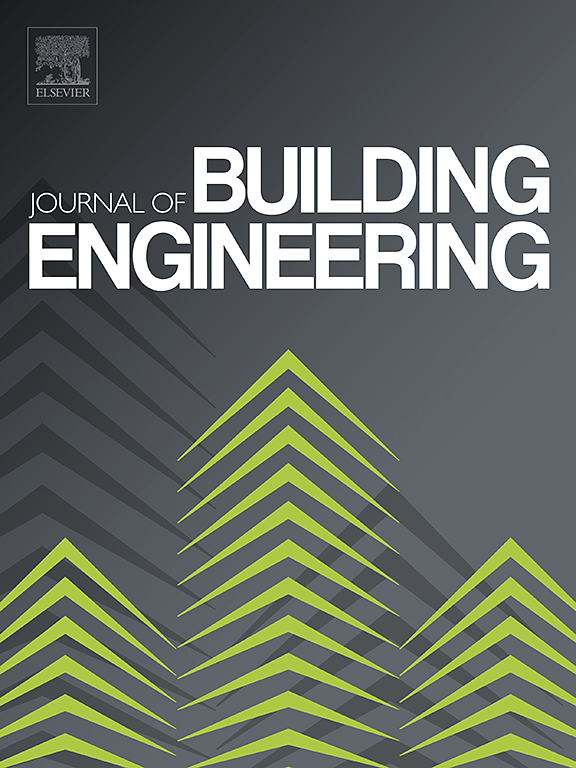CLT two-way slabs fire resistance test and numerical simulation analysis
IF 6.7
2区 工程技术
Q1 CONSTRUCTION & BUILDING TECHNOLOGY
引用次数: 0
Abstract
In order to investigate the failure mechanism and fire resistance of cross-laminated timber (CLT) two-way slabs at room temperature and under fire conditions, this paper conducted research on their fire resistance performance and performed refined finite element analysis. It analyzes and tests the temperature distribution, and mid span displacement time curve of CLT two-way slabs in a fire, summarized the failure mechanism of the CLT two-way slabs at room temperature and under fire, and compared it with the one-way slab. The results show that under vertical load, the bottom of a CLT two-way slabs will generate tensile stress. However, as wood is a brittle material, it will not undergo significant plastic deformation when the slab bottom is under tension, unlike the steel bars in reinforced concrete slabs, and will not form plastic hinge lines like reinforced concrete slabs. Compared to one-way slabs, CLT two-way slabs undergo hyperbolic deformation under load due to constraints on all four sides. This leads to a stronger overall cooperative working capacity of the components, with better load-bearing capacity than one-way slabs. At room temperature, the CLT two-way slab undergoes brittle failure with a step like decrease in bearing capacity. In a fire, the mechanical properties of the wood gradually decrease with increasing temperature, and the final vertical deflection reaches the fire resistance limit, indicating that the component has failed.
为了研究交叉层压材(CLT)双向板在常温和火灾条件下的破坏机理和耐火性能,本文对其耐火性能进行了研究,并进行了精细的有限元分析。它分析和测试了火灾中 CLT 双向板的温度分布和中跨位移时间曲线,总结了 CLT 双向板在常温和火灾条件下的破坏机理,并与单向板进行了比较。结果表明,在垂直荷载作用下,CLT 双向板的底部会产生拉应力。然而,由于木材是一种脆性材料,在板底受到拉力时不会像钢筋混凝土板中的钢筋那样发生明显的塑性变形,也不会像钢筋混凝土板那样形成塑性铰链线。与单向板相比,CLT 双向板由于四边都有约束,在荷载作用下会发生双曲变形。这使得组件的整体协同工作能力更强,承重能力也优于单向板。在室温下,CLT 双向板发生脆性破坏,承载能力呈阶梯状下降。在火灾中,木材的机械性能会随着温度的升高而逐渐降低,最终垂直挠度达到耐火极限,表明构件已经失效。
本文章由计算机程序翻译,如有差异,请以英文原文为准。
求助全文
约1分钟内获得全文
求助全文
来源期刊

Journal of building engineering
Engineering-Civil and Structural Engineering
CiteScore
10.00
自引率
12.50%
发文量
1901
审稿时长
35 days
期刊介绍:
The Journal of Building Engineering is an interdisciplinary journal that covers all aspects of science and technology concerned with the whole life cycle of the built environment; from the design phase through to construction, operation, performance, maintenance and its deterioration.
 求助内容:
求助内容: 应助结果提醒方式:
应助结果提醒方式:


